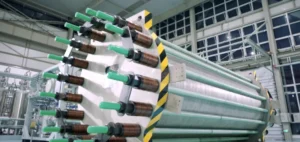Sarawak, a Malaysian region rich in renewable resources, aims to become a major player in the green hydrogen sector. Thanks to collaborations with international companies and massive investments, the region is developing several flagship projects that could transform its energy and environmental economy.
Ambitious projects under development
The H2biscus project, developed in partnership with Samsung Engineering, Posco, and Lotte Chemical, aims to produce 7,000 tonnes of green hydrogen annually for local use, and hundreds of thousands of tonnes of green ammonia and methanol for export. The project, located in the Bintulu Petchem Industrial Park, is scheduled to be operational by 2027. Meanwhile, the H2ornbill project, in collaboration with Sumitomo Corporation and Eneos, is focusing on the production of large quantities of green hydrogen. These initiatives are expected to make a significant contribution to Sarawak’s GDP, with an estimated increase of RM 2.4 billion by 2030.
Local infrastructure and innovation
To support these projects, Sarawak is also investing in local infrastructure, such as KUTS (Kuching Urban Transportation System). This RM 6 billion project will introduce a hydrogen-powered ART(autonomous rapid transit) system, combining the functionalities of trains, buses and streetcars. The first phase of KUTS, comprising the Samarahan and Serian lines, should be operational by the end of 2025. In addition, the region is developing hydrogen production and refueling stations to encourage the adoption of hydrogen-powered electric vehicles. The first PETRONAS multi-fuel station in Darul Hana has been operational since April 2022.
International outlook and challenges
The H2biscus and H2ornbill projects don’t just meet local needs. They are also targeting international markets, notably Japan and Singapore, for the export of their products derived from green hydrogen. This international ambition is reinforced by partnerships with South Korean and Japanese companies, positioning Sarawak as a leader in the export of green hydrogen in Asia. Sarawak’s commitment to the development of green hydrogen is also supported by educational and regulatory initiatives. Curtin University in Miri is now offering a Bachelor’s program in energy engineering specializing in hydrogen, training the future local workforce needed for these ambitious projects.
Sarawak stands out for its proactive and collaborative approach to energy transition, using its abundant renewable resources to position itself as a leader in green hydrogen. By attracting international investment and developing state-of-the-art infrastructure, the region is paving the way for a sustainable, innovative economy.






















